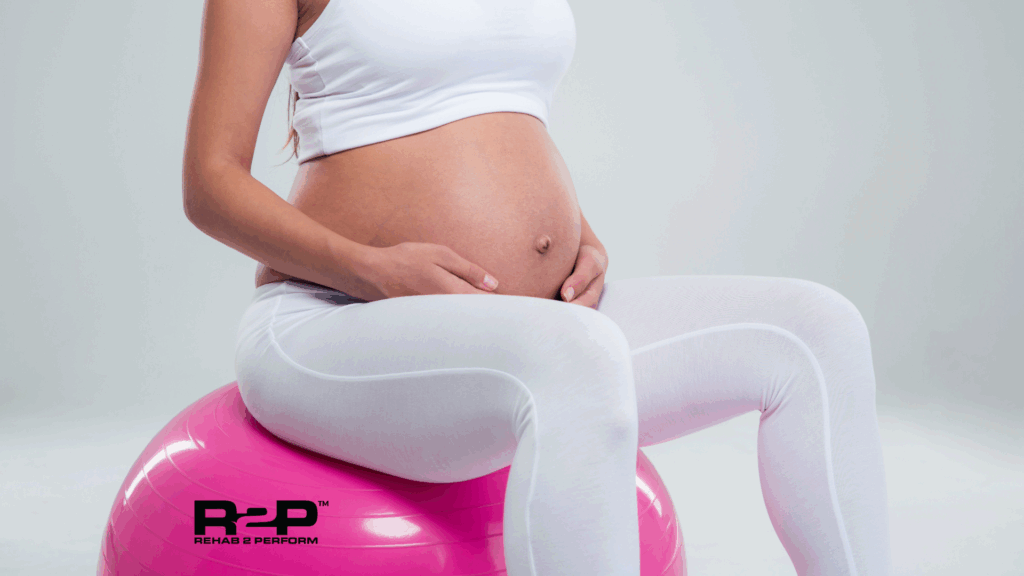How Pregnancy Affects the Pelvic Floor

How Pregnancy Affects the Pelvic Floor: Changes You Should Know About
Pregnancy is one of the most incredible transformations the human body can go through—but let’s be honest, it doesn’t always feel magical. As a pelvic health physical therapist and mom of young kids, I’ve experienced firsthand how little we’re told about what pregnancy really does to the pelvic floor.
If you’ve ever been surprised by how your body feels during or after pregnancy, you’re not alone. Many people don’t realize the extent of changes that occur in the pelvic floor—and more importantly, what can be done to support healing and function.
Let’s walk through the key changes you should know about and how pelvic floor physical therapy can help.
Your Pelvic Floor: The Unsung Hero of Pregnancy
Your pelvic floor is a group of muscles that sit like a hammock at the bottom of your pelvis. These muscles support your bladder, uterus, and rectum. They play a role in everything from posture and stability to bladder control, bowel movements, and sexual function.
During pregnancy, this muscle group is under a lot of pressure—literally and figuratively.
1. Increased Weight and Pressure
As your baby grows, so does the pressure on your pelvic floor. This added load stretches and challenges the muscles and connective tissues. For some people, this leads to symptoms like:
- Pelvic heaviness or pressure
- Urinary leaking when sneezing, laughing, or exercising
- Back or hip discomfort
While these symptoms are common, they’re not things you just have to “deal with.” Pelvic floor PT helps you manage pressure effectively and build strength where you need it most.
2. Hormonal Shifts and Ligament Laxity
Pregnancy hormones like relaxin are essential for preparing your body for birth—but they also loosen joints and ligaments, including those that support the pelvis.
That increased laxity can cause:
- Pelvic girdle pain
- Pubic symphysis discomfort
- Instability with walking, standing, or rolling over in bed
A physical therapist can teach you strategies to stabilize and support your body as things shift, helping you stay more comfortable throughout your pregnancy.
3. Changes in Posture and Alignment
As your center of gravity shifts forward with a growing belly, your posture naturally adjusts. You might notice:
- Increased arching in your lower back
- Tight hip flexors
- Weakening or overstretching in the abdominal wall
These changes can impact the way your pelvic floor functions. PT can help you stay strong and balanced as your body adapts.
4. Stress on the Abdominals and Pelvic Floor Together
As your belly expands, the rectus abdominis (your “six-pack” muscles) stretches and sometimes separates in the middle—a condition called diastasis recti. At the same time, the pelvic floor is working hard to support everything from below.
This can lead to issues like:
- Pelvic organ prolapse
- Core weakness or poor coordination
- A sense of disconnect from your core
With guided pelvic floor and core retraining, you can rebuild connection, strength, and control—both during and after pregnancy.
5. Labor and Delivery Impact
Whether you deliver vaginally or via C-section, childbirth puts additional strain on the pelvic floor.
Some common post-birth experiences include:
- Scar tissue (perineal or C-section)
- Muscle trauma or weakness
- Pain with intercourse
- Urinary or bowel dysfunction
The good news? You don’t have to wait until after birth to start getting support. Prenatal physical therapy can help prepare your body, teach you effective pushing strategies, and set you up for a smoother recovery.
Supporting Your Body Through the Journey
Pregnancy changes your body in complex ways—but those changes don’t have to define your postpartum experience. Pelvic floor PT is one of the best ways to:
- Improve comfort and mobility during pregnancy
- Minimize common symptoms like leaking or pelvic pain
- Prepare your body for delivery
- Rebuild strength and function after birth
You deserve to feel confident and supported every step of the way.
Want Help Navigating Pregnancy Changes?
Whether you’re newly pregnant, deep in the third trimester, or months postpartum, pelvic floor physical therapy can help you move better, feel stronger, and return to the activities you love.
Schedule your pelvic health evaluation today at Rehab 2 Perform:
www.rehab2perform.com/pelvic-health
Let’s work together to support your body during this powerful chapter—and help you feel your best on the other side.
- Dr. Jamie Schindler, DPT, SCS, CSCS, Pelvic Health Specialist & Area Director- Annapolis & Gambrills

About Rehab 2 Perform
Rehab 2 Perform is a leading physical therapy and sports rehabilitation company dedicated to helping clients achieve optimal performance in their daily lives, whether they are athletes, weekend warriors, or individuals recovering from injury. With a team of highly skilled professionals across 11 state-of-the-art locations (soon to be 12), Rehab 2 Perform offers a personalized, evidence-based approach that emphasizes active rehabilitation and functional fitness. Find a Location near you, or Schedule Here.
